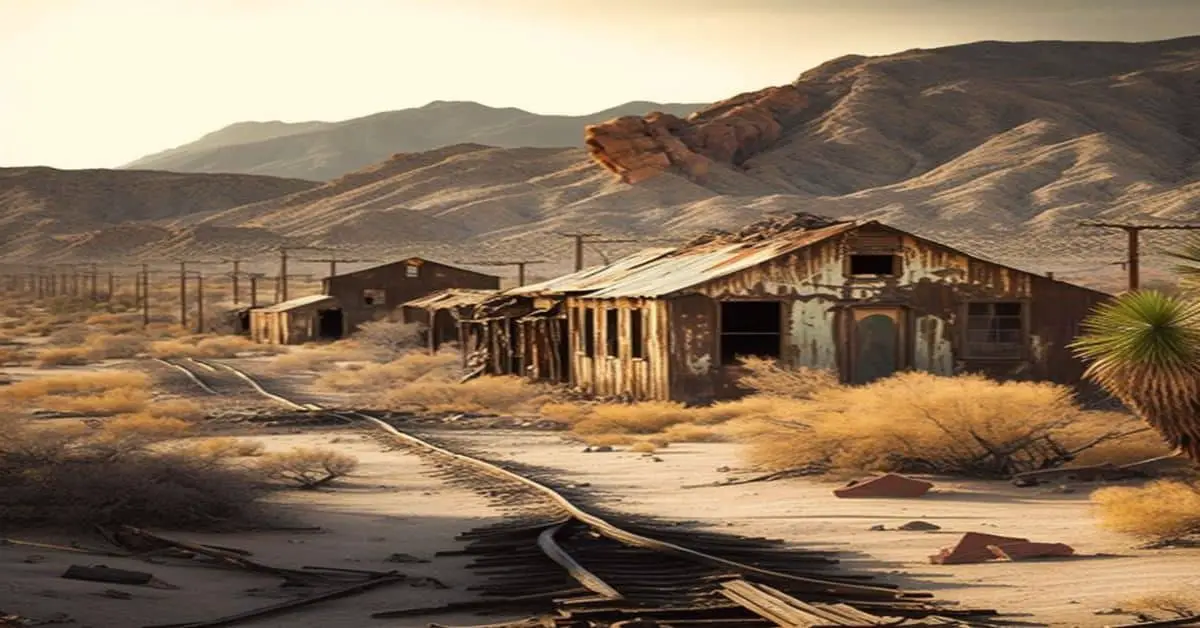Calabasas, a ghost town located in Arizona, has a rich and varied history worth exploring for those interested in the history of the American West. Once a Papago Indian village, it later served as a Mexican garrison, a U.S. military base, a mining camp, a farming community, and a railroad stop. The area was also home to the finest hotel between San Francisco and Denver.
The history of Calabasas, Arizona, is a fascinating tale of evolution, decline, and disappearance. The town’s early inhabitants were the Papago Indians, who lived in the area for centuries before the arrival of the Spanish. Later, the town served as a Mexican garrison and a U.S. military base, providing strategic importance in times of conflict. As mining and agriculture became important industries in the area, Calabasas evolved into a mining camp and a farming community.
However, the town’s fortunes began to decline as Nogales became the primary gateway to Mexico, leading to the eventual disappearance of Calabasas. Despite the lack of remains, the town’s history is worth exploring for those interested in the history of the American West.
Key Takeaways
- Calabasas, located in Arizona, has a rich history as a Papago Indian village, Mexican garrison, U.S. military base, mining camp, farming community, and railroad stop.
- The area was once important for mining and agriculture but declined after Nogales became the primary gateway to Mexico.
- Legends and mysteries about gold mines and buried treasures in Calabasas continue to draw visitors worldwide, though most remain unfound.
- While the once-thriving community has disappeared, the ruins of Calabasas, Arizona, offer a fascinating glimpse into the history of the American West.
Location and Early Inhabitants
Calabasas, a former Papago Indian village that later became a Mexican garrison, U.S. military base, mining camp, farming community, and railroad stop, was located eight miles north of Nogales on the Rio Rico Ranch and served as an important gateway to Mexico until Nogales took over, leading to its decline into non-existence.
The Papago Indian culture significantly influenced the early history of Calabasas, with the village serving as a hub for trade and agriculture. The Mexican influence is also evident, as the village was established as a garrison to protect the Mexican border from Apache raiders.
The U.S. Military presence in Calabasas profoundly impacted the village’s development. The military established a base in the area during the Mexican-American War, and later used the site as a training ground for troops during World War II. The base also played a key role in the mining industry, as the military provided crucial transportation infrastructure to support the mining operations in the area.
Despite the multiple influences on its development, Calabasas ultimately declined into non-existence, with Nogales taking over as the primary gateway to Mexico and leaving the village to ruins.
Evolution of Calabasas
The evolution of Calabasas involved various stages of development. The area was once a Papago Indian village, which later became a Mexican garrison and a U.S. Military base.
The mining industry also played a significant role in the town’s growth, becoming a mining camp and a farming community. Additionally, the town served as a railroad stop, which contributed to its economic development.
Aside from its economic significance, Calabasas also holds cultural significance. It was once home to the Papago Indians, known for their unique culture and traditions. The town’s transformation over time reflects the changes in the region’s economy and social structure.
Despite its decline and designation as a ghost town, Calabasas remains an important reminder of the area’s rich history and cultural heritage.
Decline and Disappearance
Following its economic decline, the once-thriving community of Calabasas disappeared entirely, leaving remnants of its past. The town’s decline was attributed to the rise of Nogales as the gateway to Mexico, which drew away business and visitors from Calabasas.
Today, visitors can explore the ruins of the once-bustling community today, though there is little left to see beyond a scattering of crumbling buildings and overgrown foundations.
Despite its disappearance, Calabasas is still remembered for its rich history and the lost treasures that were said to have been hidden in the town. Though most remain unfound, stories of gold mines and buried treasures have circulated for years.
Some visitors still come to the area searching for these hidden riches, hoping to uncover a piece of the town’s fabled past. While the town itself may be gone, the legends and mysteries that surround it live on, drawing in visitors from all over the world to explore the ruins and uncover the secrets of Calabasas.
Frequently Asked Questions
What kind of mining occurred in Calabasas, and what minerals were extracted?
Mining operations in Calabasas primarily focused on copper extraction, with some silver and lead also mined. Techniques used included underground mining and open-pit mining, which had a significant environmental impact on the area.
Were there any notable events or conflicts that occurred during the time Calabasas was a military base?
Life on the base at Calabasas consisted of daily routines and military personnel. The base impacted the local economy by providing jobs and businesses. No notable events or conflicts are recorded during this time.
What was the population of Calabasas at its peak, and how did it compare to neighboring towns?
Calabasas’ peak population is unknown, but it was likely small compared to neighboring towns due to its history as a military base, mining camp, and farming community. Economic growth and job opportunities were limited, leading to its decline.
Is there any evidence of the Papago Indian village that once existed in Calabasas, Arizona?
Archaeological evidence suggests the presence of a Papago Indian Village in Calabasas, which holds cultural significance and highlights the Native American heritage of the area. Historical preservation efforts should prioritize recognizing and protecting this important historical site.
What was the reason for discontinuing the Calabasas post office in 1913?
The reason for discontinuing the Calabasas post office in 1913 is not documented. However, it is likely that the decline of the town due to Nogales taking over as the gateway to Mexico, impacted the community’s need for postal services.


